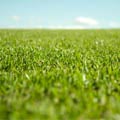 From Queensland to Melbourne via Sydney and Canberra there isn’t really a perfect grass variety, but HAL (Horticulture Australia Limited) with the help from some research carried out in WA, set out to find which variety was the best for the area.
From Queensland to Melbourne via Sydney and Canberra there isn’t really a perfect grass variety, but HAL (Horticulture Australia Limited) with the help from some research carried out in WA, set out to find which variety was the best for the area.
According to recent research done by the Queensland Primary Industries and Fisheries Department of Employment, Economic Development and Innovation (HAL project TU04013), available at http://era.deedi.qld.gov.au/1764/ * they found Sir Walter buffalo was a good one.
13 buffalo (Stenotaphrum secundatum) cultivars were tested at 7 locations for their colour, turf quality and thatch development. The tables below is a summary of the results for 4 of those cultivars. (0=worst, 9=best)
| Cultivar | Total of colour scores | Average colour | % diff from control |
|---|---|---|---|
| Palmetto | 64 | 5.8 | 4 |
| Sapphire | 62.9 | 5.7 | 2 |
| Sir Walter | 66.7 | 6.1 | 9 |
| Shademaster | 61.1 | 5.6 | control |
| Cultivar | Total of quality scores | Average quality | % diff from control |
|---|---|---|---|
| Palmetto | 61.8 | 6.2 | -2 |
| Sapphire | 60.7 | 6.1 | -3 |
| Sir Walter | 64.8 | 6.5 | +3 |
| Shademaster | 63.1 | 6.3 | control |
((0=bare ground (no thatch) 9=heaviest thatch))
| Cultivar | Total of thatch scores | Average Thatch | % diff from control |
|---|---|---|---|
| Palmetto | 36.3 | 4 | -13 |
| Sapphire | 39.3 | 4.4 | -5 |
| Sir Walter | 40.1 | 4.5 | -2 |
| Shademaster | 41.6 | 4.6 | Control |
* When we combine these scores with the thatch score as a negative to give a true overall figure, we get:
| Cultivar | Colour+quality-thatch | % difference from control |
|---|---|---|
| Palmetto | 89.5 | 8 |
| Sapphire | 84.3 | 2 |
| Sir Walter | 91.4 | 10 |
| Shademaster | 82.6 | control |
* Sir Walter Buffalo, according to this research is a good one, that’s why it is the most popular and biggest buffalo in Oz (data available from TPA research).
Following are some other interesting statistics from the same recent research highlighting Sir Walter Buffalo’s characteristics.
Sward height
Turf sward height (mm) on irrigated swards of 4 buffalos grasses grown under shade at Redlands Research Station Qld. Oct 07-May 09
| Cultivar | Total height | Av. Over 9 measurements | % difference from control |
|---|---|---|---|
| Palmetto | 525.1 | 58.3 | +1 |
| Sapphire | 546.8 | 60.7 | +5 |
| Sir Walter | 536.6 | 59.6 | +3 |
| Shademaster | 518.8 | 57.6 | Control |
* All varieties grew to about the same height with Sapphire needing slightly more mowing to look acceptable.
NB, These results differ greatly from other non-independent research posted elsewhere on the web.
Wear
Percentages of bare ground determined visually for 4 buffalo grasses that have undergone wear treatments in Aug 08 at Redlands Research Station Qld
| Cultivar | % bare over 14 wks,10 readings | Acceptable level achieved at wk | % difference from control |
|---|---|---|---|
| Palmetto | 26.2 | 13 | +209 |
| Sapphire | 51.9 | 13 | +415 |
| Sir Walter | 16.3 | 9 | +130 |
| Shademaster | 12.5 | 9 | control |
*Sir Walter Buffalo & Shademaster had about half the wear of Palmetto whereas Sapphire wore twice as much. Palmetto & Sapphire took 4 weeks longer to reach an acceptable level after being worn than Sir Walter buffalo grass.
Drought tolerance
Total clippings produced (g/m2) by 4 buffalo grass genotypes irrigated at 80%, 50% or 33% replacement of net evaporation, for 98 days in plots at Shenton Park WA (summer of 07/08). Plots were mown weekly at 25mm.
| Cultivar | Clippings @ 80% replacement (control) g/dry mass/m2 | Clippings @ 50% replacement (% of control) |
Clippings @ 33% replacement (% of control) |
|---|---|---|---|
| Palmetto | 148 | 82 | 17 |
| Sapphire | 149 | 82 | 47 |
| Sir Walter | 203 | 91 | 54 |
| Shademaster | 145 | 104 | 45 |
*Sir Walter buffalo grass produced more clippings under extreme drought than Palmetto or Sapphire meaning it is more drought tolerant.
Root mass
Total root mass (kg dry mass /m3) of 4 buffalo grass genotypes. Samples taken at – 12mths (Nov 06) and -24mths (Dec 07) after planting from irrigated plots irrigated at 80% replacement of net evaporation at Shenton Park WA
| cultivar | Increase kg/m3 | % increase | % increase over control |
|---|---|---|---|
| Palmetto | 5.51 | 177 | -21 |
| Saphire | 5.78 | 193 | -13 |
| Sir Walter | 8.3 | 230 | +24 |
| Shademaster | 6.68 | 225 | Control |
*In the 2nd year of your lawns life, Sir Walter buffalo grass will increase its root structure 51% more than Palmetto and 44% more than Sapphire.
Root depth
Root distribution 12mths after planting (21/11/06)
| cultivar | Root depth |
|---|---|
| Palmetto | <50cm |
| Sapphire | <50cm |
| Sir Walter | 50-100cm |
| Shademaster | 50-100cm |
*After only 12 months, Sir Walters roots exceed 50cm in depth
Leaf water content
Leaf water content of 4 buffalo grass genotypes irrigated at 50% or 33% replacement of net evaporation for 56 days during summer of 06/07.Shenton Park WA.
| cultivar | @50% replacement of net evaporation. ml/g dry mass | @33% replacement of net evaporation. ml/g dry mass |
|---|---|---|
| Palmetto | <2.5 | <2 |
| Sapphire | <2.5 | <2 |
| Sir Walter | >2.5 | >2 |
| Shademaster | <2.5 | <2 |
* Sir Walter Buffalo Grass loses the least amount of moisture from the leaf in extreme dry conditions.
Shade
Subjective turf quality rating (0=dead, 6=acceptable and 10=excellent) at end of 10wk trial (11/5/09) Qld
| Cultivar | 0% | 30% | 50% | 70% | 90% |
|---|---|---|---|---|---|
| Palmetto | 5.3 | 4.7 | 3.7 | 3.7 | 1.0 |
| Sapphire | 7.7 | 6.3 | 5.0 | 4.0 | 1.7 |
| Sir Walter | 6 | 5.0 | 4.3 | 4.0 | 1.7 |
| Shademaster | 7.3 | 5.3 | 5.0 | 3.7 | 0.7 |
* Sapphire & Sir Walter Buffalo Grass have similar shade tolerances at high levels of shade. Palmetto & Sir Walter may have scored better if the initial (0%) turf quality was better.
Winter growth
Comparison of winter growth of 4 buffalo grass genotypes, samples taken winter July 07 at Wembley Golf Course WA
| Cultivar | Winter Clippings g/m2/wk | % Difference from control |
|---|---|---|
| Palmetto | .22 | -21 |
| Sapphire | .35 | 25 |
| Sir Walter | .76 | 271 |
| Shademaster | .28 | control |
*Sir Walter Buffalo Grass grew right through winter, producing 3.5 times the growth of Palmetto & over twice that of Sapphire, making it a true winter active lawn being more capable to handle the wear and tear of the average Aussie back yard.
Winter colour
Comparison of summer vs. winter colour of 4 buffalo grass genotypes. Measurements taken Feb 07 & Jul 07 at Wembley Golf Course WA
| Cultivar | Summer Hue angle | Winter Hue angle | Change indicating Winter decline |
|---|---|---|---|
| Palmetto | 114 | 101 | -13.2 |
| Sapphire | 118 | 111 | -7 |
| Sir Walter | 114 | 106 | -8.5 |
| Shademaster | 112 | 98 | -14.8 |
*Sir Walter & Sapphire Buffalo Grass had the least loss of colour in winter, whereas Palmetto nearly lost as much colour as Shademaster.
NB, These results differ greatly from other non-independent research posted elsewhere on the web.
* Denotes editor’s comments.



